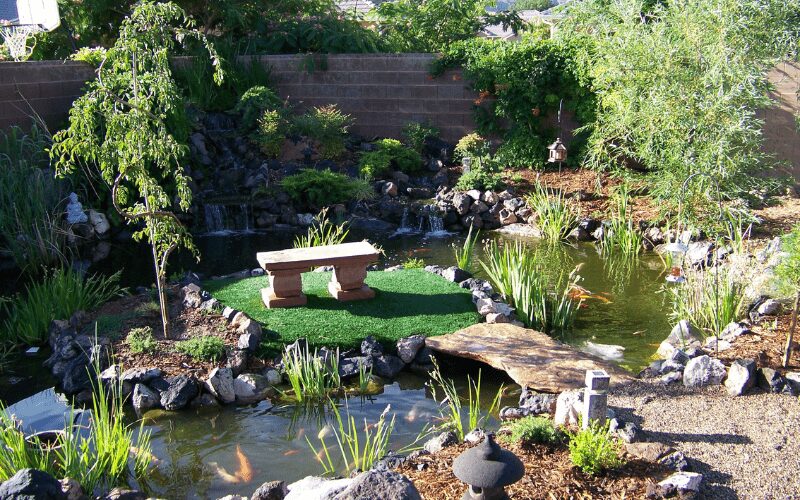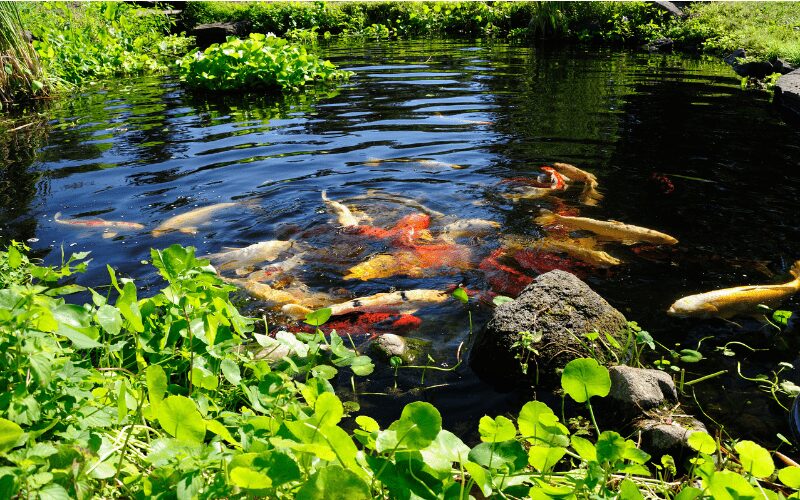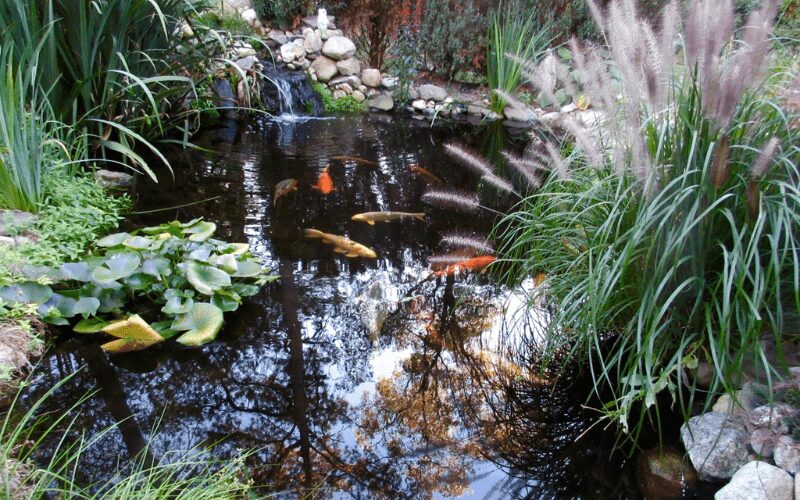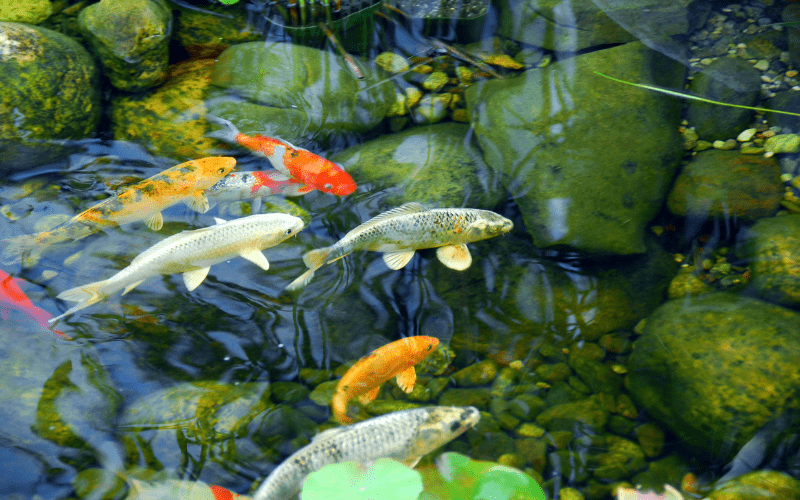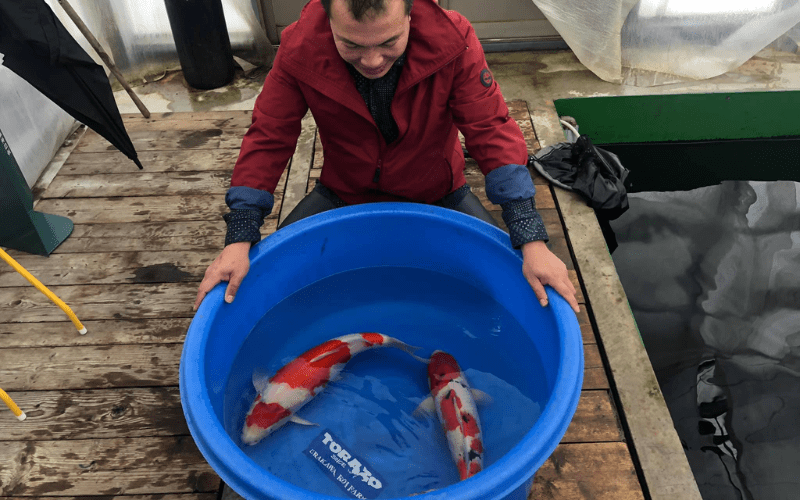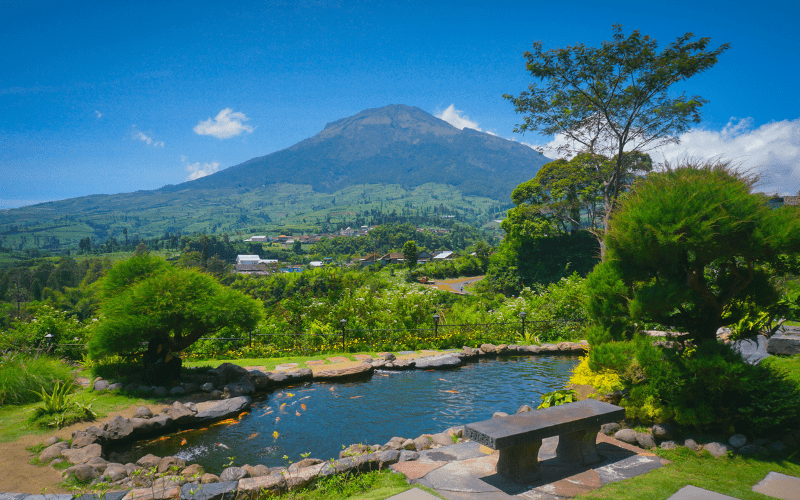Maintaining a healthy and vibrant koi pond requires a deep understanding of the intricate balance of its ecosystem. Among the many factors that contribute to the well-being of koi and the overall pond environment, beneficial bacteria play a pivotal role. In this comprehensive guide, we’ll delve into the world of beneficial bacteria, exploring their types, benefits, introduction methods, maintenance, and common challenges. Whether you’re a seasoned koi pond enthusiast or a beginner, understanding the importance of beneficial bacteria will help you create a thriving pond environment.
Understanding Beneficial Bacteria
What is the Best Beneficial Bacteria In Koi Pond?
Beneficial bacteria are microorganisms that perform essential functions in the koi pond ecosystem. These bacteria are naturally occurring and help break down organic waste, convert harmful compounds into less toxic forms, and maintain the overall health of the pond. By establishing a balanced bacterial population, pond owners can ensure a clean and stable environment for their koi.
Types of Beneficial Bacteria
1. Nitrosomonas:
Nitrosomonas bacteria are responsible for converting ammonia, a toxic waste product excreted by fish, into nitrite. This process is the first step in the nitrogen cycle, which is crucial for maintaining water quality.
2. Nitrobacter:
Nitrobacter bacteria convert nitrite, which is also harmful to fish, into nitrate. Nitrate is less toxic and can be utilized by plants as a nutrient. Together, Nitrosomonas and Nitrobacter complete the nitrogen cycle, ensuring that harmful compounds are effectively neutralized.
Nitrogen Cycle in Koi Ponds
The nitrogen cycle is a fundamental process in koi ponds that involves the conversion of ammonia to nitrite and then to nitrate. This cycle is vital for maintaining a healthy environment for koi, as it prevents the buildup of toxic substances. Here’s a simplified overview of the nitrogen cycle:
- Ammonia Conversion: Fish waste and decomposing organic matter produce ammonia. Nitrosomonas bacteria convert ammonia into nitrite.
- Nitrite Conversion: Nitrobacter bacteria then convert nitrite into nitrate.
- Nitrate Utilization: Nitrate is absorbed by pond plants or removed through water changes, completing the cycle.
Benefits of Best Beneficial Bacteria In Koi Pond
Maintaining Water Quality
One of the primary benefits of beneficial bacteria is their ability to maintain water quality. By breaking down organic waste and converting harmful compounds, these bacteria help create a clean and stable pond environment. This process reduces the risk of water quality issues that can stress or harm koi.
Promoting Koi Health
Beneficial bacteria play a significant role in promoting the health and well-being of koi. By keeping ammonia and nitrite levels in check, they prevent the occurrence of diseases and stress-related issues. Healthy water conditions lead to vibrant and active koi, enhancing their overall appearance and vitality.
Balancing Pond Ecosystem
A balanced pond ecosystem is essential for the long-term health of koi and other pond inhabitants. Beneficial bacteria support plant life by providing essential nutrients through the breakdown of organic matter. Additionally, they help control algae growth by competing for nutrients, creating a more stable and balanced pond environment.
Introducing Best Beneficial Bacteria to Your Koi Pond
Natural Methods
1. Using Pond Plants:
Pond plants not only add beauty to the pond but also contribute to the establishment of beneficial bacteria. Plants provide surfaces for bacteria to colonize and help absorb excess nutrients, promoting a healthy bacterial population.
2. Introducing Fish Gradually:
Adding fish to the pond gradually allows the bacterial population to adjust to the increased waste load. This prevents sudden spikes in ammonia and nitrite levels, ensuring a smoother transition for the pond’s ecosystem.
Commercial Products
1. Bacterial Additives:
Bacterial additives are commercially available products that contain concentrated beneficial bacteria. These additives can be introduced to the pond to boost the bacterial population, especially during the initial setup or after pond maintenance.
2. Filter Media:
Biological filter media provide a surface for beneficial bacteria to colonize within the pond’s filtration system. These media enhance the efficiency of the filtration process, promoting a healthy bacterial population.
Maintaining The Best Beneficial Bacteria Population In Your Koi Pond
Proper Filtration System
1. Mechanical Filtration:
Mechanical filtration removes debris and solid waste from the pond water, preventing clogging and maintaining optimal conditions for beneficial bacteria.
2. Biological Filtration:
Biological filtration systems are designed to provide a large surface area for beneficial bacteria to colonize. These systems enhance the breakdown of organic matter and the conversion of harmful compounds.
Regular Pond Maintenance
1. Water Changes:
Regular water changes help remove excess nutrients and maintain water quality. This practice prevents the buildup of harmful substances and supports the bacterial population.
2. Cleaning Debris:
Removing debris such as fallen leaves and uneaten food prevents the accumulation of organic matter, which can lead to water quality issues. A clean pond environment promotes healthy bacterial growth.
Optimal Environmental Conditions
1. Temperature Control:
Maintaining a stable water temperature is crucial for the health of beneficial bacteria. Sudden temperature fluctuations can stress bacteria and affect their efficiency.
2. pH and Oxygen Levels:
Ensuring the pond’s pH and oxygen levels are within the appropriate range supports the growth and activity of beneficial bacteria. Proper aeration and pH monitoring are essential for a healthy bacterial population.
Common Challenges and Solutions
Bacterial Imbalance
Causes:
Bacterial imbalances can occur due to factors such as overfeeding, inadequate filtration, or sudden changes in water conditions. These imbalances can lead to spikes in ammonia and nitrite levels.
Remedies:
To address bacterial imbalances, perform regular water tests to monitor ammonia, nitrite, and nitrate levels. Adjust feeding practices, improve filtration, and consider using bacterial additives to restore balance.
Algae Blooms
Managing Nutrient Levels:
Algae blooms are often caused by excess nutrients in the pond. Reducing nutrient levels through regular water changes and proper feeding practices can help control algae growth.
UV Clarifiers:
UV clarifiers are effective tools for controlling algae blooms. These devices use ultraviolet light to kill algae cells, improving water clarity and reducing competition for nutrients.
Key Points about Best Beneficial Bacteria in Koi Ponds
| Aspect | Details |
|---|---|
| Types of Bacteria | Nitrosomonas (converts ammonia to nitrite), Nitrobacter (converts nitrite to nitrate) |
| Benefits | Maintains water quality, promotes koi health, balances pond ecosystem |
| Introduction Methods | Natural methods (pond plants, gradual fish introduction), commercial products (additives, filter media) |
| Maintenance Practices | Proper filtration, regular water changes, debris cleaning, optimal environmental conditions |
| Common Challenges | Bacterial imbalance (overfeeding, inadequate filtration), algae blooms (excess nutrients) |
| Solutions | Regular water testing, improved filtration, UV clarifiers, nutrient management |
FAQs
Q: How long does it take for beneficial bacteria to establish?
A: Beneficial bacteria typically take 4-6 weeks to establish a stable population in a new pond. Using bacterial additives can help speed up this process.
Q: Can you have too much beneficial bacteria in a pond?
A: It’s rare to have too many beneficial bacteria. However, an imbalance can occur if the bacterial population outpaces the available nutrients, leading to potential issues with water quality.
Q: How to test for beneficial bacteria levels?
A: Regular water tests for ammonia, nitrite, and nitrate levels provide insights into the bacterial activity in the pond. Stable low levels of ammonia and nitrite indicate a healthy bacterial population.
Q: Are there any signs of beneficial bacteria imbalance?
A: Signs of bacterial imbalance include sudden spikes in ammonia or nitrite levels, increased algae growth, and cloudy water. Regular monitoring and maintenance can help prevent imbalances.
Conclusion
Beneficial bacteria are the unsung heroes of a healthy and thriving koi pond. By understanding their role, types, benefits, and maintenance practices, pond owners can create an environment where koi flourish. Regular monitoring, proper filtration, and maintaining optimal conditions are key to ensuring a stable bacterial population. Embracing the power of beneficial bacteria will lead to a vibrant and balanced pond ecosystem, allowing koi to live healthy and fulfilling lives.
For more tips and advice on maintaining your koi pond, visit Torii Koi and Pond’s blog or reach out to our team of experts. Together, we can create the perfect environment for your koi to thrive.

